Qigong

 Some forms of it even incorporate martial arts. It is a practice of cultivating life force energy just like acupuncture, but people can actually do it themselves, without needing a practitioner. Qigong can help with all areas of health: mental, physical and spiritual health.
Some forms of it even incorporate martial arts. It is a practice of cultivating life force energy just like acupuncture, but people can actually do it themselves, without needing a practitioner. Qigong can help with all areas of health: mental, physical and spiritual health.
The word Qigong (pronounced "chee gong") is a combination of two ideas: "Qi" means air, breath of life, or vital energy of the body, and "gong" means the self-discipline skill of working, cultivating, and balancing Qi (QIGONG INSTITUTE).
QIGONG INSTITUTE/Introduction to the Practice of Qigong/FAQ. Retrieved from: https://www.qigonginstitute.org/category/4/getting-started
NQA(National Qigong Association)/What is Qigong?. Retrieved from: https://www.nqa.org/what-is-qigong-
University of Minnesota: Taking Charge of Your Health & Wellbeing/Qigong. Retrieved from: https://www.takingcharge.csh.umn.edu/qigong
Great Grand Master Kellen Chia. (2011, October 23). TAI CHI SOCIETY/The Difference Between Tai Chi and Qigong. Retrieved from: http://www.taichisociety.net/difference-between-tai-chi-qigong.html
Qigong can help a person with disease prevention, as well as working on self-healing from an illness. There is evidence that focused breathing can bring the body into an alkaline balanced state, which can provide major health benefits for the body.
Qigong works to fix imbalances in a person’s body such as the deep emotions of anger, anxiety, depression, and grief. Additionally, it can help with injuries, trauma, unhealthy diets, a lack of exercise, and etc. It can also just bring a sense of joy, vitality and peacefulness.
Here are some more specific explanations of the benefits of Qigong:

NQA(National Qigong Association)/What is Qigong?. Retrieved from:
https://www.nqa.org/what-is-qigong-
University of Minnesota: Taking Charge of Your Health & Wellbeing/Qigong. Retrieved from: https://www.takingcharge.csh.umn.edu/qigong
mindvalley/Qigong Benefits That Bring Fulfillment To Your Life. Retrieved from:https://blog.mindvalley.com/qigong-benefits/
Frantzis, Bruce. (2018, February 9). Energy Arts/Qigong Benefits. Retrieved from:
It can help with health conditions including:
University of Minnesota: Taking Charge of Your Health & Wellbeing/Qigong. Retrieved from: https://www.takingcharge.csh.umn.edu/qigong
Although it is suitable for injured and chronically sick people to practice, it would be beneficial to work with a Qigong teacher for beginners. The likelihood of injury is very low though.
Medical Qigong shares a lot of theories found in Traditional Chinese medicine with similar treatments and methods for diagnosis. It is the oldest of the four branches of Traditional Chinese Medicine and the energetic foundation from which acupuncture, herbal medicine, and Chinese massage (tui na) originated (University of Minnesota). Movements are supposed to improve the flow of Qi, and massage the internal organs with slow and relaxed physical exercises. There are two forms of medical qigong: Self-Healing and Qi Emission.
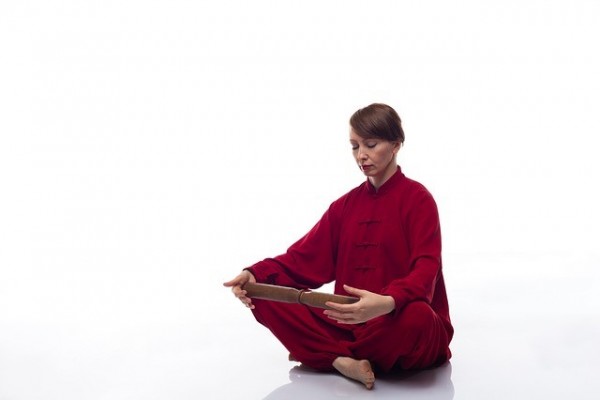 With Self-Healing qigong people perform qigong exercises to improve health, address any illnesses, and prevent diseases.
With Self-Healing qigong people perform qigong exercises to improve health, address any illnesses, and prevent diseases.
With Qi Emission, a practitioner emits Qi for healing. Similar to Reiki, practitioners control Qi and emit it through placing hands above a person or lightly touching them. They might also utilize massage, acupuncture, tools (metals or stones), energizing items (stones, teas, metals, or water), and distant healing (emitting energy to someone many miles away).
Meditation Qigong has many techniques and methods. Most meditation Qigong entails visualization, focusing the Qi to move to a specific part of the body, or focusing on breathing patterns, sounds, specific ideas, images and concepts (Chia, 2011). This form of qigong is often utilized in Chinese martial arts. Meditation can be done sitting, standing, or lying down. There are three types of meditation: moving, still, and sitting. Moving meditation is about paying attention to energy within movements, posture, breathing, and position transitions. Still meditation is when postures are held for longer periods of time, similar to yoga. Lastly, sitting meditation focuses on the breath, paying attention to the body and mind.
Martial Qigong helps people who practice martial arts to improve their power. The Qigong training typically involves repeatedly tensing and then loosening the muscles, combined with deep, long breaths often incorporating reversed abdominal breathing (Chia, 2011). It is required to be reasonable fit before attempting it, otherwise it could damage the body’s systems. It can lead to stronger muscles, tendons, and ligaments, while also improving the function of internal organs.
Spiritual Qigong is another form of Qigong more popular in China. This Qigong has religious influences of Buddhism, Taoism, and Confucianism. This type of qigong uses mantras, mudras (hand positions), sitting meditations, and prayers to pursue enlightenment (University of Minnesota). It is all about harmony, tranquility, and self-awareness with nature and self.
University of Minnesota: Taking Charge of Your Health & Wellbeing/Qigong. Retrieved from: https://www.takingcharge.csh.umn.edu/qigong
Chia, Great Grand Master Kellen. (2011, October 23). TAI CHI SOCIETY/The Difference Between Tai Chi and Qigong. Retrieved from: http://www.taichisociety.net/difference-between-tai-chi-qigong.html
NQA(National Qigong Association)/What is Qigong?. Retrieved from:
How Does Qigong Work
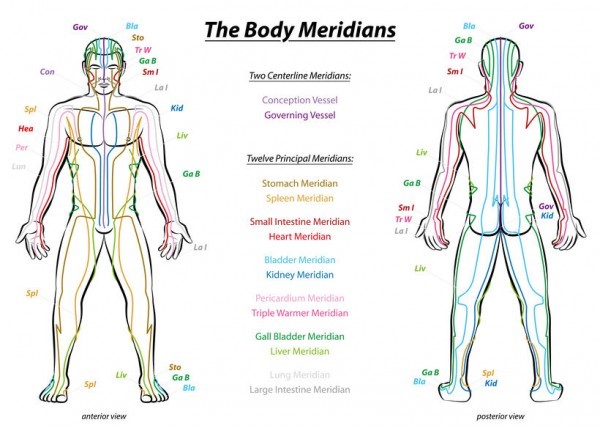 Receiving a Qigong treatment is similar to receiving an acupuncture treatment, or even physical exercise that helps reduce emotional stress. It uses the same meridian lines as acupuncture and Chinese medicine. It enhances our ability to feel the Life Force underlying the physical world and to deepen our communication with it (NQA). The practice of qigong helps stimulate the meridians, and the flow of energy improves the body’s natural ability to heal.
Receiving a Qigong treatment is similar to receiving an acupuncture treatment, or even physical exercise that helps reduce emotional stress. It uses the same meridian lines as acupuncture and Chinese medicine. It enhances our ability to feel the Life Force underlying the physical world and to deepen our communication with it (NQA). The practice of qigong helps stimulate the meridians, and the flow of energy improves the body’s natural ability to heal.
Our bodies are always working to keep us in a constant state of homeostasis, where everything in the body is in balance. The body is continuously battling the fight-flight reaction vs. the relaxation response. However, when the body becomes overstressed this relaxation response is more difficult to achieve. This is a problem since many people in today’s world are living in a continuous state of stress without full awareness of it. Qigong helps the body to achieve that relaxation response returning the body to homeostasis.
How does Qi Work
To understand Qigong, it is important to first understand how Qi works. The ‘Qi’ in Qigong stands for the life force energy that is in every living thing. Qi is the basis for Traditional Chinese Medicine. Qi flows along the meridians in the body, and it must flow freely throughout the body in order for a person to be in a healthy state. Too much Qi can cause internal organs to become exhausted, and blocked Qi prevents other parts of the body from getting what they need. Qigong not only balances the Qi, but also removes access, improves shortages, and helps the flow throughout the body.
Qigong is a combination of meditation, posture, movement, self-massage, breathing techniques, guided imagery, and focused intent.
Great Grand Master Kellen Chia. (2011, October 23). TAI CHI SOCIETY/The Difference Between Tai Chi and Qigong. Retrieved from: http://www.taichisociety.net/difference-between-tai-chi-qigong.html
University of Minnesota: Taking Charge of Your Health & Wellbeing/Qigong. Retrieved from: https://www.takingcharge.csh.umn.edu/qigong
Dr. Nagel, Denise. (2016, June 22). HUFFPOST/Health Benefits of Tai Chi and Qigong. Retrieved from:
https://www.huffpost.com/entry/health-benefits-of-tai-ch_b_7641712
NQA(National Qigong Association)/What is Qigong?. Retrieved from:
Qigong originates from China, and it has been around for over 5,000 years. Qigong was introduced around 1122 B.C., around the time India’s Buddhist and meditation practices were introduced to the Chinese people. This infusion brought Qigong practice and meditation into the second period, the religious Qigong era, which lasted until the Liang dynasty, when it was discovered that Qigong could be used for martial purposes (Dr. Yang, 2018). Martial Qigong was developed around principles of Buddhist and Daoist Qigong. Qigong is also referred to as “Dao Yin” referring to leading and guiding energy, along with “Nei Gong” referring to inner work.
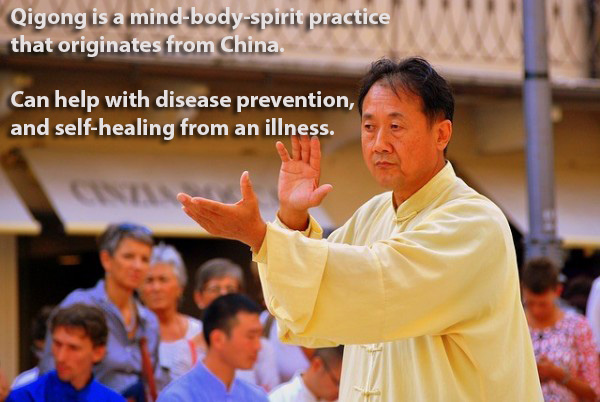 Huang Ti (The Yellow Emperor) made huge contributions to the health practices of Qigong. He is the creator of the Yellow Emperor’s Classic of Internal Medicine, a text written around 300 B.C. that is still considered the bible of Chinese Medicine.
Huang Ti (The Yellow Emperor) made huge contributions to the health practices of Qigong. He is the creator of the Yellow Emperor’s Classic of Internal Medicine, a text written around 300 B.C. that is still considered the bible of Chinese Medicine.
During 206 B.C. to 502 A.D. there was both medical Qigong focused on improving health, and a form of religious Qigong. Qigong during this time was influenced by India’s Buddhism and yoga meditation techniques. For hundreds of years, Qigong was taught only in Buddhist temples, and it was a long time before it became available to the general population. It was passed down among generations, but not taught to laymen. Thousands of different styles were developed in secret. A few examples of distinct styles are Tai Chi, Animal Frolics, Eight Pieces of Brocade, Swimming Dragon, Microcosmic Orbit, and Six Syllable Secret (Holden Qigong). For some physicians, Qigong was their primary form of Chinese Medicine. Then, herbs and acupuncture were used when Qigong was ineffective in restoring balance in the body.
Development of Tai Chi
The creation of Tai Chi was supposedly developed by a Daoist named Chang San-Feng sometime between 960-1279 A.D. during the Song Dynasty. In 1026 A.D., Dr. Wang Wei-Yi’s established theories and principles of Acupuncture. He made great contributions to the development of Qigong with a better understanding of how Qi circulates in the body.
Recent History and Spread of Qigong Worldwide
Around 1911 after the overthrow of the Qing Dynasty, Chinese Qigong practices were combined with the Qigong practices of countries such as India, Japan, and other countries Qigong practices. The first book that mentioned Qi was likely “The Book of Changes” which mentioned three natural energies. These energies include di (Earth), Tian (Heaven), and Ren (Man). People would study the relationship of the three in order to learn Qigong. Various Qigong styles are now being taught openly, and many formerly secret documents are being published (Dr. Yang, 2018). During the 1990’s Qigong received world-wide recognition, with international conferences in California and Canada. In 1997, it was estimated that there were over one-hundred-thousand qigong practitioners outside of China, with several thousand of those being in the United States and Canada (Holden Qigong). It has become one of the most popular healing exercises in the world along with yoga.
Dr. Yang, Jwing Ming. (2008, February 28). YMAA/A Brief History of Qigong. Retrieved from: https://ymaa.com/articles/history/history-qigong
HOLDEN QIGONG/History of Qigong. Retrieved from:
https://www.holdenqigong.com/history-of-qigong/
IQIM (The Institute of Qigong & Integrative Medicine)/Brief History of Qigong. Retrieved from: https://www.iqim.org/about/history-of-qigong/
In 1985, the government approved formation of the China Qigong Science Association. Since then hundreds of controlled scientific studies of qigong have been carried out, all showing positive benefits of the practice (Holden Qigong).
There are many studies showing the effectiveness of Qigong for helping with various health issues. Here are just a few of them:
Mayo Clinic ~ New Research Shows Qigong Can Relieve Chronic Pain
Studies to support Qigong for: Hypertension, Cardiovascular Rehabilitation, and Stress An Evidence-based Review of Qi Gong by the Natural Standard Research Collaboration
Effects of Qigong on symptom management in cancer patients: A systematic review.
Qigong Exercises for the Management of Type 2 Diabetes Mellitus.
Qigong and Fibromyalgia circa 2017.
Qigong Exercise and Arthritis.
This study shows the effectiveness of Qigong for multiple health conditions. A Comprehensive Review of Health Benefits of Qigong and Tai Chi
HOLDEN QIGONG/History of Qigong. Retrieved from:
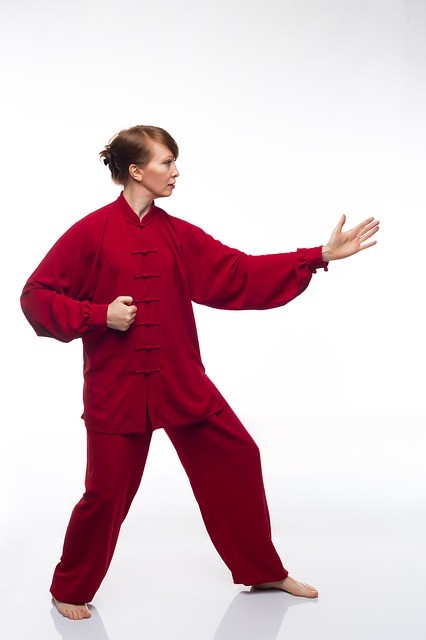 There are four levels of Qigong instructors. A level 1 instructor has just the initial training of at least 200 hours. At level 2 an instructor can understand technical form well and increase students inner Qi-awareness. With at least 350 hours of documented formal training, this would definitely be a suitable instructor. Level 3 is an Advanced Qigong Instructor, and they will have to ability to generate Qi and absorb it from the atmosphere. This requires 500 hours of formal training that is documented.
There are four levels of Qigong instructors. A level 1 instructor has just the initial training of at least 200 hours. At level 2 an instructor can understand technical form well and increase students inner Qi-awareness. With at least 350 hours of documented formal training, this would definitely be a suitable instructor. Level 3 is an Advanced Qigong Instructor, and they will have to ability to generate Qi and absorb it from the atmosphere. This requires 500 hours of formal training that is documented.
The last level is the Senior Qigong Teacher with over 1000 hours of formal training. They must also have 10 years teaching teachers, and must go through an interview process to qualify for this designation. Before working with a Qigong teacher, find out what level of certification they possess. To read more about these certifications visit: Qigong Awareness or the NQA.
Here are a couple of directories you can use to find a Qigong practitioner:
NQA (National Qigong Association)
Institute of Integral Qigong and Tai Chi
International Medical Qigong College
To find exercises you can learn on your own visit:
Qigong Institute: Getting Started with Qigong
Clinical Qigong for Healing
There is also separate training for becoming a Clinical Qigong Practitioner. The clinical practitioners can control and emit Qi to heal a person, and may provide recommended exercises to do, as well. There are a lot of requirements for being a Clinical Qigong Practitioner, and you can read about those on the NQA website. There are only two levels for clinical practitioners.
Qigong Awareness/Certification Programs. Retrieved from: https://qigongawareness.com/certification-programs/
NQA(National Qigong Association)/What is Qigong?/NQA Certification Program. Retrieved from:
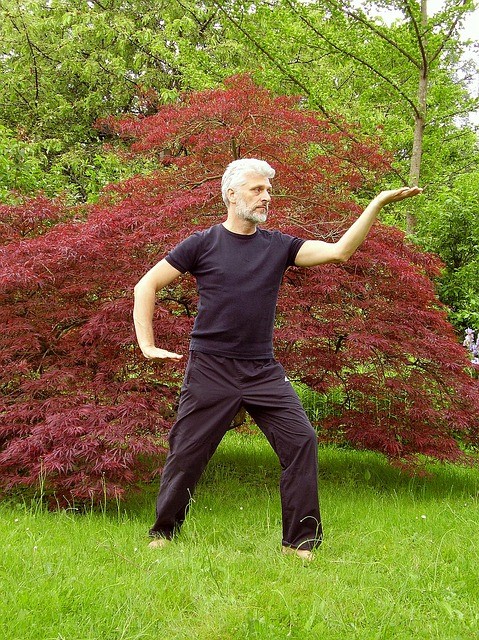 ou don’t have to be in the best physical condition, it is not requirement to be flexible, and exercises can even be modified to not require a person to stand. All you need is patience to learn them.
ou don’t have to be in the best physical condition, it is not requirement to be flexible, and exercises can even be modified to not require a person to stand. All you need is patience to learn them.
Many people find it to have some commonalities to yoga, but it is typically easier and doesn’t require you to complete exercises on the floor. No equipment is needed, and exercises can be done at home, at a gym, or even outside.
To begin Qigong a person has to learn physical movements combined with specific breathing techniques. Once they learn the form, the next step is to find the subtle flow or fluctuation of energy within the postures, movements, breathing patterns, and transitions (University of Minnesota). This is referred to as moving meditation. Along with the moving meditation, there are postures that are held for a period of time to strengthen limbs and increase energy flow. This is called still meditation. The last form people learn is sitting meditation. It is all about focusing on the breath, body, and mind, and may also involve visualization.
Dr. Nagel, Denise. (2016, June 22). HUFFPOST/Health Benefits of Tai Chi and Qigong. Retrieved from: https://www.huffpost.com/entry/health-benefits-of-tai-ch_b_7641712
University of Minnesota: Taking Charge of Your Health & Wellbeing/Qigong. Retrieved from: https://www.takingcharge.csh.umn.edu/qigong
Great Grand Master Kellen Chia. (2011, October 23). TAI CHI SOCIETY/The Difference Between Tai Chi and Qigong. Retrieved from: http://www.taichisociety.net/difference-between-tai-chi-qigong.html
NQA(National Qigong Association)/What is Qigong?/NQA Certification Program. Retrieved from:
https://www.nqa.org/what-is-qigong-
University of Minnesota: Taking Charge of Your Health & Wellbeing/Qigong. Retrieved from: https://www.takingcharge.csh.umn.edu/qigong
Dr. Nagel, Denise. (2016, June 22). HUFFPOST/Health Benefits of Tai Chi and Qigong. Retrieved from:
https://www.huffpost.com/entry/health-benefits-of-tai-ch_b_7641712
Frantzis, Bruce. (2018, February 9). Energy Arts/Qigong Benefits. Retrieved from:
https://www.energyarts.com/qigong-benefits/
mindvalley/Qigong Benefits That Bring Fulfillment To Your Life. Retrieved from:https://blog.mindvalley.com/qigong-benefits/
Dr. Yang, Jwing Ming. (2008, February 28). YMAA/A Brief History of Qigong. Retrieved from: https://ymaa.com/articles/history/history-qigong
IQIM (The Institute of Qigong & Integrative Medicine)/Brief History of Qigong. Retrieved from: https://www.iqim.org/about/history-of-qigong/
HOLDEN QIGONG/History of Qigong. Retrieved from:
https://www.holdenqigong.com/history-of-qigong/
QIGONG INSTITUTE/Introduction to the Practice of Qigong/FAQ. Retrieved from: https://www.qigonginstitute.org/category/4/getting-started
Qigong Awareness/Certification Programs. Retrieved from: https://qigongawareness.com/certification-programs/